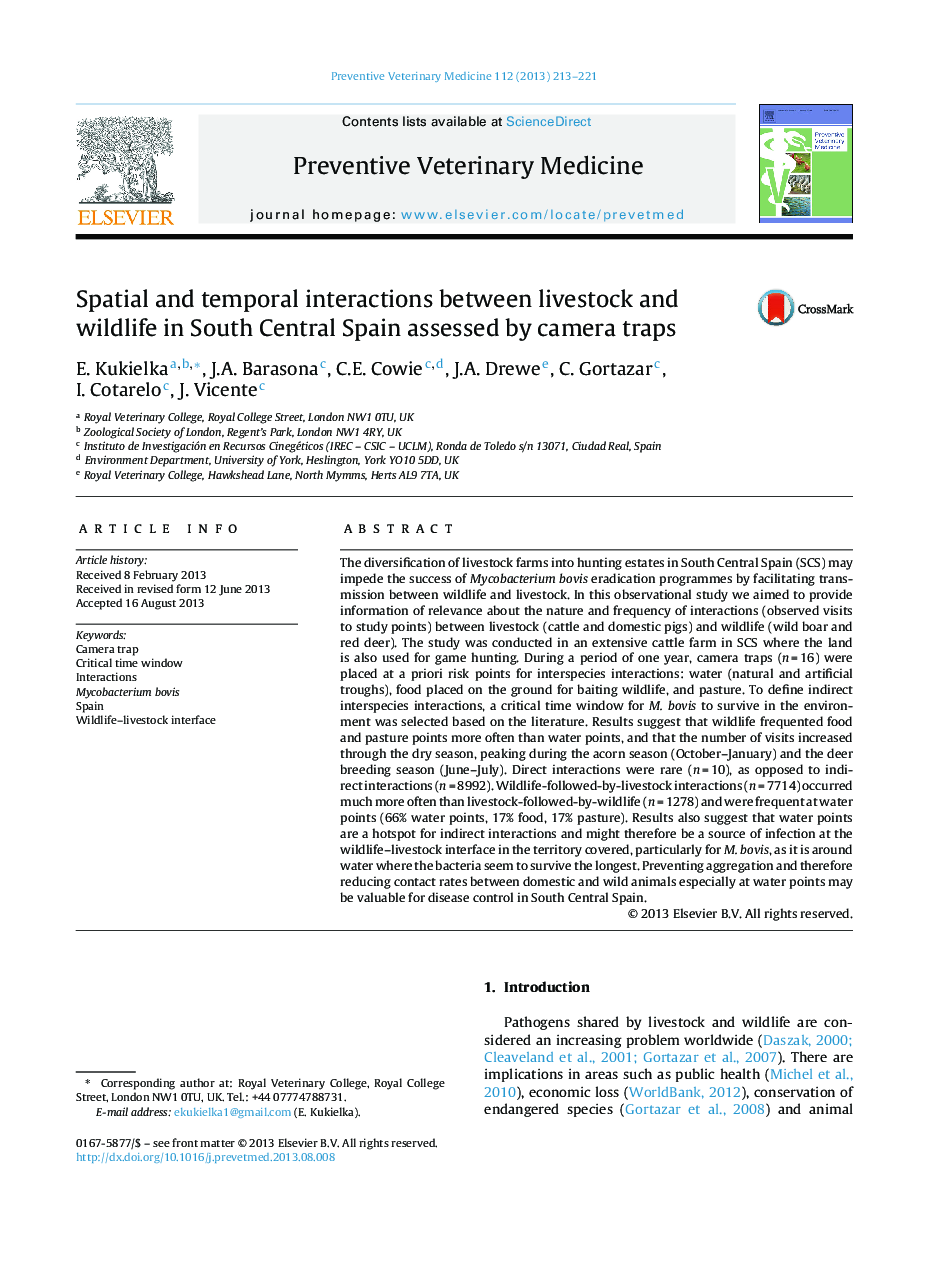| کد مقاله | کد نشریه | سال انتشار | مقاله انگلیسی | نسخه تمام متن |
|---|---|---|---|---|
| 5793622 | 1554178 | 2013 | 9 صفحه PDF | دانلود رایگان |
The diversification of livestock farms into hunting estates in South Central Spain (SCS) may impede the success of Mycobacterium bovis eradication programmes by facilitating transmission between wildlife and livestock. In this observational study we aimed to provide information of relevance about the nature and frequency of interactions (observed visits to study points) between livestock (cattle and domestic pigs) and wildlife (wild boar and red deer). The study was conducted in an extensive cattle farm in SCS where the land is also used for game hunting. During a period of one year, camera traps (n = 16) were placed at a priori risk points for interspecies interactions: water (natural and artificial troughs), food placed on the ground for baiting wildlife, and pasture. To define indirect interspecies interactions, a critical time window for M. bovis to survive in the environment was selected based on the literature. Results suggest that wildlife frequented food and pasture points more often than water points, and that the number of visits increased through the dry season, peaking during the acorn season (October-January) and the deer breeding season (June-July). Direct interactions were rare (n = 10), as opposed to indirect interactions (n = 8992). Wildlife-followed-by-livestock interactions (n = 7714) occurred much more often than livestock-followed-by-wildlife (n = 1278) and were frequent at water points (66% water points, 17% food, 17% pasture). Results also suggest that water points are a hotspot for indirect interactions and might therefore be a source of infection at the wildlife-livestock interface in the territory covered, particularly for M. bovis, as it is around water where the bacteria seem to survive the longest. Preventing aggregation and therefore reducing contact rates between domestic and wild animals especially at water points may be valuable for disease control in South Central Spain.
Journal: Preventive Veterinary Medicine - Volume 112, Issues 3â4, 1 November 2013, Pages 213-221
